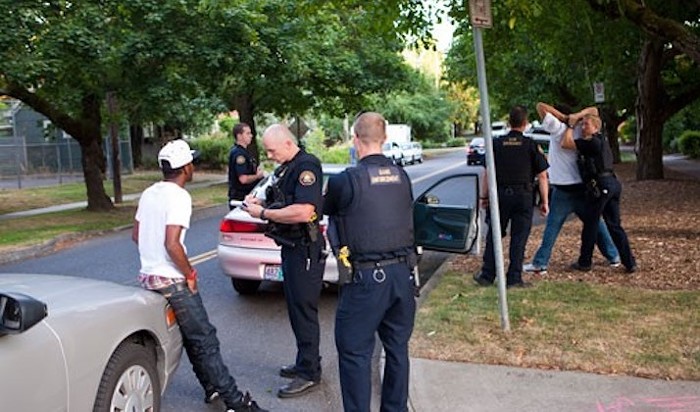Feature your business, services, products, events & news. Submit Website.
Breaking Top Featured Content:
Portlanders Closest to Gun Violence Find City’s Latest Solution Lacking
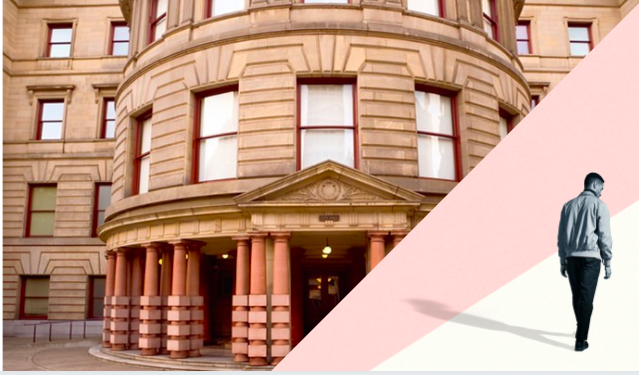

Mike “Bretto” Jackson is used to getting phone calls at 2 am from men intent on killing someone.
As a mentor working with young men involved in Portland gangs, Jackson often takes on a role akin to an addiction recovery sponsor—someone who could potentially talk a person out of making a reactionary decision. In this case, that decision is whether to shoot someone associated with a rival gang, often in retaliation for a previous shooting.
“I tell them, ‘Look, I understand your pain, but there are consequences for your decisions,’” said Jackson. “I talk about options, about their future. But I also empathize with them.”
Jackson has the kind of lived experience that builds trust in the men he mentors, who range between 17 and 25 years old. Jackson first joined a gang at the age of 12 in his hometown of Los Angeles, following in the path paved by his older Black family members and neighbors. Jackson, a hip-hop artist also known by his stage name Libretto, maintained his allegiance with that gang after moving to Portland following high school. It took a stint in federal prison—and the pain of losing 20 friends to gang violence over the course of twenty years—for Jackson to change course. Jackson now works as a youth mentor at Rosewood Initiative, a wide-ranging community resource nonprofit in East Portland, and Community Healing Initiative, a county-funded collaboration between local nonprofits geared at decreasing youth violence.
The work has planted Jackson on the front lines of Portland’s recent uptick in deadly shootings.
The Portland Police Bureau (PPB) reported 55 homicides in 2020—the highest number recorded in 26 years. Forty-one of the killings were carried out with firearms. The trend has continued: Since January 1, shootings were responsible for 18 of the city’s 25 homicides. Portland saw only three homicides total over the same period of time in 2020; at this rate, PPB estimates Portland will see 100 homicides by the end of 2021.
While Black people make up about 6 percent of Portland’s population, they made up more than 50 percent of all shooting victims in Portland in 2020.
This surge in gun-related homicides isn’t unique to Portland, nor can it be linked to any one cause. Researchers have pointed to a slew of potential reasons, including financial and emotional instability caused by the COVID-19 pandemic, the despair sparked by the murder of George Floyd, and racial justice protests that have distracted police from investigating shootings.
“Adding more police is like putting sugar on shit. It makes it taste a little better, but it’s not really changing anything.”
Last week, Mayor Ted Wheeler responded to the trend by hastily reinstating PPB’s controversial specialty unit focused on preventing shootings. On Tuesday, the Multnomah County District Attorney’s office announced that officers within Portland, Gresham, and Multnomah County law enforcement agencies are now federally deputized to work on an FBI-led task force to investigate local gun violence. The program promises nearly $400,000 in federal dollars to PPB alone to bolster the work.
These closed-door agreements came together without any input from the public. Jackson, along with others who work directly with the people who are closest to this crisis, doesn’t see the community’s needs reflected in what’s become a familiar and police-centered response to gun violence.
“Adding more police is like putting sugar on shit. It makes it taste a little better, but it’s not really changing anything,” Jackson said. “You may prevent murders, but you won’t stop the problem. You’re just going to have a lot more guys in jail… a lot more families without fathers. Then what?”
When it comes to methods to curb gun violence, Portland’s community of former gang members and others who work with individuals belonging to gangs are not a monolith. Some see the benefits of police intervention, while others have joined activists’ calls to abolish the police.
But most seem to be in agreement over what solutions work best to disrupt violence—and it’s not what city officials are prioritizing.
Instead, they want to see Portlanders who have lived experience as gang members empowered to steer the next generation of Black youth away from violence. But for some policymakers, that could be a big ask: It not only means trusting individuals who the city has spent decades over-policing and characterizing as criminals, but making real investments in the programs that allow them to lead.
“We’re not looking to pacify this problem,” said Jackson. “We want to stop it. It’s bigger than just adding more police to the streets.”
For much of the past 30 years, PPB has had a gun violence specialty unit.
While it’s not always acknowledged outright, the program has traditionally been centered on preventing gang violence. That means hiring officers to patrol neighborhoods that known gang members call home, using traffic violations as an excuse to stop and question suspected gang members, and fostering relationships with people close to suspected gang members to collect intelligence.
Over the decades, the program has encountered criticisms for over-policing Black Portlanders, whether that be through maintaining a list of predominantly Black people suspected to be “affiliated” with a gang, or through hard data that’s proven the specialty unit disproportionately pulls over Black drivers.
Despite these ongoing criticisms, Portland City Council didn’t have the political will to challenge the 36-officer unit until June 2020, when outrage over yet another unarmed Black man being killed by a police officer—in this case, the murder of Minneapolis’ George Floyd—drew thousands of Portlanders to the streets in protest.
In response to protesters’ sweeping list of demands to curtail racist policing practices and defund the bureau, Portland City Council cut funding for several PPB specialty units widely considered to disproportionately target people of color. That included axing the $5.4 million annual budget of the controversial Gun Violence Reduction Unit (GVRT).
Portland was already seeing a surge in shootings before the GVRT was disbanded, but its dissolution gave law enforcement advocates an easy culprit to blame for the violence: City Council. In August, PPB Chief Chuck Lovell and police union leaders joined the chorus of voices calling on council to restore the program to stem the violence.
Wheeler, who serves as both Portland’s mayor and police commissioner, resisted the demands until March, when he announced his support of a new plan put forward by PPB and a coalition of local religious leaders. The $2 million initiative would immediately reinstate the GVRT, but split its responsibilities between a new 21-person unit to investigate shootings (which had already begun work in February) and a proposed 12-person patrol assigned to prevent shootings.
It’s this latter team that raised alarm bells for racial justice advocates and Wheeler’s fellow city commissioners, all four of whom were blindsided by Wheeler’s endorsement. That’s because GVRT’s patrol team had been the main source of the unit’s racial profiling problems.
Last week, following a whirlwind negotiation that involved no public engagement, Portland City Council negotiated a new agreement that would make the return of the gang unit slightly more palatable to critics.
The solution was twofold. First, commissioners passed a $6 million emergency budget package to fund $4.1 million in grants for organizations that support communities impacted by gun violence, with the rest going to the hiring of new crime data analysts and seasonal park rangers to surveil city parks. Second, Wheeler instructed the PPB to reinstate the controversial GVRT—under the new name “Focused Intervention Team”—without giving PPB any additional funding. Instead, Wheeler asked Lovell to pull officers off their current assignments to staff the 12-person team. The only significant difference between the GVRT and this new team is, for now, a vague promise of a citizen board that could oversee the unit’s work.
““For as much talk as there is about wanting to listen to people with lived experience, there doesn’t seem like there’s much action to do so.”
These rushed, seemingly contradictory decisions were guided by many of the same voices that have historically steered local politicians’ decisions on gun violence prevention: Paid consultants, directors of nonprofits, religious leaders, police unions, police, and retired police officers.
“For as much talk as there is about wanting to listen to people with lived experience, there doesn’t seem like there’s much action to do so,” said Donovan Smith, who serves as a co-vice president of Portland’s chapter of the NAACP.
In March, Portland’s NAACP sent a letter to City Council, making it clear they opposed Wheeler’s plan to reinstate PPB’s gun violence unit. Smith said no one from the city reached out for NAACP’s input before making their decision. After a year of public calls for racial justice and equity, often echoed by elected officials, Smith and others wonder why the Black Portlanders who arguably have the most expertise regarding Portland’s gang violence weren’t given a seat at the table.
“These are the perspectives they should be chasing right now,” Smith said.
To understand how to interrupt gun violence in Portland, said youth mentor Jackson, city officials must first understand how youth of color get pulled into street gangs.
In Portland, like many cities, gang membership is inextricably linked with race. Many of the most active gangs outside of prison are led by Portlanders of color. Jackson said that it shouldn’t be surprising that Black Americans, in particular, are drawn to gangs.
“We’re claiming these blocks, these colors, because we have no identity as a people,” said Jackson. “When you take away a person’s cultural history and identity, you’re going to get this.”
Talilo Marfil, who runs a mentorship program called Ascending Flow for Portland youth who are aging out of foster care, said that this pursuit of identity via gang membership is especially true for people of color in Portland, where white people make up 77 percent of the city’s population. Marfil, who is Filipino, grew up involved in Oregon gangs.
“Maybe you have no roots to your culture, maybe it’s a regional thing, maybe your family is in the gang, maybe someone you look up to,” said Marfil, who recalled once dressing up his five-year-old brother in his former gang’s colors. “Maybe you have beef with someone, and you’ll feel more protected in a gang. There’s so many reasons.”
And there may be far fewer reasons not to join a gang.
As a social studies teacher at Rosemary Anderson High School, Lakayana Drury said he often talks with Black youth struggling to find future opportunities.
“They tell me that they feel like there’s no plan for their success,” Drury said. “And I’m sitting here thinking, ‘They’re right, there is no plan.’”
Drury points to the systematic underfunding in social programming, education, employment programs, and affordable housing for Black Portlanders.
“They see no hope, and are turning to desperate lives,” Drury said. “Our city has not been able to create opportunities on a whole for Black people to thrive. Gun violence is one of the symptoms of a system that neglects Black people.”
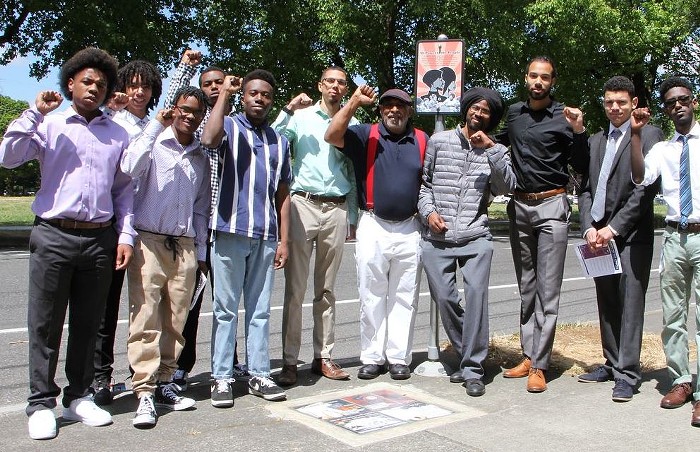
Drury also leads the nonprofit Word is Bond, which focuses on building positive relationships between law enforcement and young Black men through paid summer internships, legal rights classes, and other programs. Last month, city commissioners held up Word is Bond as an example of a community program that could benefit from the new $4.1 million in promised grant funds to deter gun violence.
Drury said he’s grateful to see the city investing in upstream solutions to the societal factors that lead to gun violence. But he believes the city could be more direct in their support.
“What’s missing is that we’re not getting enough funding to the actual people,” said Drury. “Why pay the organizations when we could pay to stabilize individuals who could be vulnerable to gun violence? What would happen if we inject funds directly into the community?”
It’s not dissimilar to the US government offering land grants to incentivize white settlers to move to Oregon in the 1850s, said Drury.
“It’s not something foreign to our country,” he said. “What’s foreign is just who we think deserves it.”
Once someone is affiliated with a gang, it’s hard to cut ties, and those who leave are often ostracized or targeted. Additionally, according to Marfil, those who leave gangs are often still considered to be members by that gang’s rivals—meaning that even if someone attempts to put their gang-related past behind them, they could still be a target in retaliatory shootings. It’s something Marfil, who hasn’t been associated with a gang for a decade, thinks about often.
“I’ve been working in the community for 10 years,” said Marfil. “But I’m still worried about being shot every day. You need support to get through that.”
It’s that kind of support, through peer mentorship programs and mental health support, that Marfil says the city should be organizing its gun violence response around—not cops, who Marfil says are “just another gang to us.”
“The more distance between the cops and the [city’s] program, the better,” he said.
Marfil founded Ascending Flow in 2018, after working with homeless youth at New Avenues for Youth and with teens who were struggling academically at the alternative education nonprofit Open School. Through his work, he’s observed that youth who have grown up in gang-centric communities are more comfortable opening up to someone who has a similar background.
“They see someone who looks like them who’s made it out, and they’re willing to take a chance,” said Marfil, who is also a local hip-hop artist.
Those peer mentorships require long-term investment. At Ascending Flow, Marfil and his small staff currently mentor 20 young adults who were formerly in foster care. That involves showing up to court hearings, introducing them to creative outlets, helping them resolve conflicts, and supporting self efficiency to meet personal goals.
Our city has not been able to create opportunities on a whole for Black people to thrive. Gun violence is one of the symptoms of a system that neglects Black people.”
Jackson also sees mentorship programs as a key part of the city’s answer to gun violence. While he understands the city’s desire to quickly address the current surge in shootings, he knows that unless there’s an investment in relationships, top-down solutions will do little to permanently curb the violence.
“If we’re talking about preventing gun violence, that starts with meeting young adults where they’re at,” said Jackson.
Jackson has grown frustrated watching Portland’s older gang members recruiting younger people to join them and carry out shootings. He wants to encourage these older men to instead take on peer mentor roles to lead new generations down a different path.
Yet there’s little financial incentive to do that work.
Despite having an unmatched impact on youth, peer mentor jobs are consistently underpaid, which can keep many folks with lived experience from pursuing it as a career. Peer mentors in Oregon make an average annual salary of $35,000. Licensed professional counselors, meanwhile, collect a salary more than twice that amount. Meanwhile, the former supervisor of the police bureau’s gun violence unit made $234,116 last year.
It’s also difficult to secure state financial aid as a standalone peer mentor program, Marfil said. While Oregonians on Medicaid are currently able to bill Oregon Health Plan to cover mentorship programs related to substance abuse recovery, the same coverage doesn’t apply to mentorship programs that focus on keeping youth away from gun violence.
Peer support could also help interrupt someone’s involvement in a gang at critical junctures.
Research shows that those who’ve been injured by gun violence are the most susceptible to making life-altering decisions in the hours immediately following the shooting. For some, that decision could be planning a retaliatory shooting. For others, it could be deciding to leave a gang behind.
Marfil attends monthly meetings with leaders of color and Portlanders who were formerly in gangs to discuss their communities’ needs and brainstorm solutions. One recent idea: Finance and staff an emergency response program that sends trained first responders and peer mentors to the scene of a shooting to connect with the victim before law enforcement arrives.
“Imagine having someone who’s been in a shooting be there to talk you through those immediate emotions,” said Marfil. He said the idea was partially a solution to both the reportedly slow ambulance response times and to gang-impacted communities’ distrust of law enforcement. But it’s also an opportunity to offer a pathway out of gun violence.
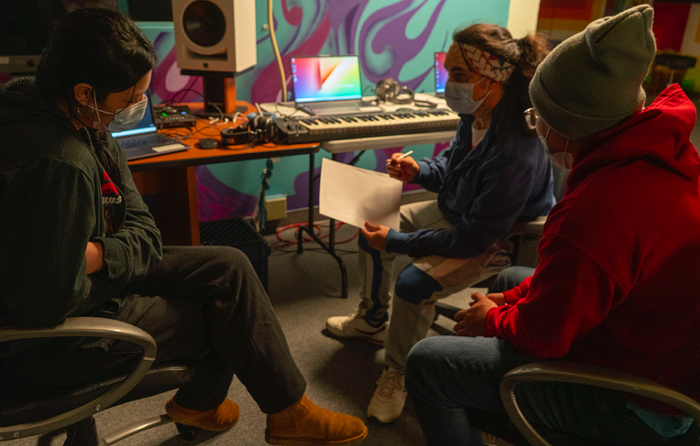
One similar peer-led program has found support in City Hall. The program, Healing Hurt People, works with Legacy Emanuel Medical Center which, as Portland’s only Level I trauma center, is where most victims of serious gunshots are treated. Hospital staff alert Healing Hurt People whenever a person of color shows up in Legacy’s emergency room with gunshot wounds. It’s a partnership that guarantees that, when a victim wakes up from surgery, there’s someone with lived experience in the room to offer support—whether that’s emotional or financial—to keep that person from succumbing to violent retribution.
Healing Hurt People, led by former gang member Roy Moore, has been buoyed with annual grant allocations from the city’s Office of Violence Prevention (OVP), which currently oversees several contracts with nonprofits to address gun violence at the community level. But the program’s small yearly allocation of $349,000 has prevented the program’s two-person on-call staff from expanding.
Last week’s budget vote put the OVP in charge of allocating the $4.1 million grant dollars across community groups. Per the ordinance, OVP will be able to approve annual grants up to $500,000 per organization, potentially allowing programs like Healing Hurt People more resources to expand.
For Marcia Perez, investments like these are a sign of hope. Perez has spent the past decade at Multnomah County’s Department of Community Justice, where she worked with gang-impacted youth of color who have gone through the juvenile justice system. Perez has seen countless city and county gun violence reduction programs come and go, dependent on the will of rotating elected officials and rarely making a dent in the problem.
“Typically, prevention and intervention strategies are poorly funded and are often unsustainable over time due to budget cuts,” wrote Perez in an email to the Mercury. “Often, we see community-based organizations running programs that are so underfunded [that] they run into capacity issues, which leads to less effective outcomes.”
“I wish that local leadership would consider the impacts of their investments.”
While Perez is heartened by public funds going to new community programs, she’d also like to see the city follow through on previous investments it’s made to stem gun violence. She’s sat through numerous community listening sessions on gun violence and heard countless pledges to collect and analyze data and do better.
“Oftentimes the city and the county collect this information as an initiative and then, due to attrition or leadership changes, this work comes to an end and collects dust on an abandoned desk,” Perez said. “I wish that local leadership would consider the impacts of their investments.”
That cycle can be seen clearly in Portland’s attempts to track racist policing.
In 2006, PPB partnered with community organizations to hold public meetings on racial profiling in policing, a process that resulted in a report to Portland City Council. One of the report’s numerous recommendations: “Starting immediately, the Portland Police Bureau should collect and analyze data on individual officers’ traffic and pedestrian stops to determine the extent to which racial profiling occurs institutionally.”
More than a decade after this mandate, a 2018 audit of PPB’s former Gang Enforcement Team (GET) found that its officers only recorded a person’s race during a stop 62 percent of the time. Despite that data gap, the audit still concluded that officers were disproportionately pulling over Black drivers on the suspicion that they were involved in a gang.
Instead of using that data to confirm the 15-year-old hypothesis that PPB did engage in racial profiling, city leaders gave the GET a new name (the GVRT) and kept the unit intact. A year later, the city auditor’s office found that the PPB had done little to improve its data collection system. PPB still insists that the program’s numbers do not indicate a pattern of racially biased policing.
City Commissioner Jo Ann Hardesty, who helped facilitate the 2006 listening session as a community organizer, said this shows why the city needs to stop trusting the police to solve its gun violence problems.
“Without totally changing the culture of the Portland Police Bureau,” Hardesty told the Mercury, “the bureau isn’t willing or able to do better.”
Not all former Portland gang members agree. Royal Harris, a figure in the formation of some of Portland’s first Black gangs in the 1980s, has long argued that PPB’s gang violence unit offers a necessary deterrent to individuals caught up in gun violence. Harris is intimately familiar with the deadly cycle of gang shootings: In 2013, his brother was fatally shot outside the now-shuttered Fontaine Bleau nightclub, an incident that PPB investigators say incited at least 114 retaliatory shootings over the following four years.
Harris worries that without a team of police dedicated to gun violence, PPB won’t be able to adequately investigate these types of linked shootings.
“When you take away specialized units, you have officers who don’t know what’s going on,” said Harris, who works for Multnomah County’s Health Birth Initiative, supporting new Black fathers and their families. “You can’t connect dots, there’s no collaboration. We’re conflating bad policing with how to police acute situations.”
But Harris says that, on its own, investing in police is not going to lower Portland’s homicide rate. Even when the GVRT was fully funded, it wasn’t able to interrupt the four years of violence following his brother’s death.
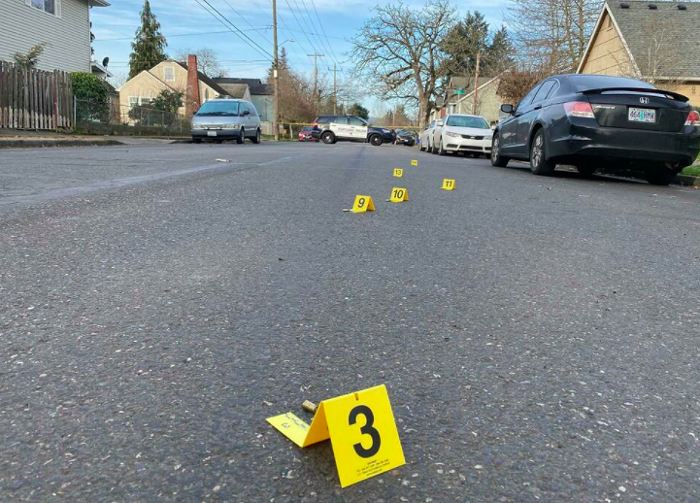
Like Jackson, Harris sees true change coming from his generation of former gang members, many of whom still live in the Portland area.
“To a certain degree, the kids involved in these shootings now are the progeny of myself and my friends,” said Harris. “I want to engage those men who’ve moved on, since they can speak to [the] behaviors and attitudes these young guys feel better than anyone.”
After decades of former gang members being tracked by Portland police and having their criminal records limit their access to community programs and leadership roles, Harris says it’s on the city to empower and invest in these men.
“We should be asking them, ‘What are pro-social things that could have helped you in the past?’” Harris said. “I know we won’t get those answers from politicians or police.”
The struggle to interrupt gun violence is not unique to Portland, which is why local officials often look to other cities for a solution.
In Boston, Philadelphia, and the California cities of Oakland, Richmond, and Stockton, gun violence intervention programs have seen both short-term success and dead ends. After Oakland introduced its “Oakland Ceasefire” program in 2012—a strategy that combined investments in community programs and the “targeted” policing of regular gun violence offenders—the city saw shooting homicides drop by nearly 50 percent, a decrease the city directly attributes to the program. In Richmond, a similar program, “Operation Peacemaker,” has been credited with reduced shooting deaths by 55 percent.
This data, however, comes with several caveats. Like Portland, all of these cities have seen gun violence skyrocket over the past year. Oakland saw a 47 percent increase in homicides in 2020, with Richmond not far behind.
“It’s getting into the psyche of men who’ve been told their whole life that there are no options for them, that there’s no light at the end of the tunnel.”
Perhaps more importantly, the success of these programs only came after there was genuine buy-in from communities—specifically from the communities most impacted and intertwined with gun violence. The first time it was introduced in 2002, Oakland youth held a protest opposing the plan’s police-centered approach. Oakland’s program, crafted by city officials and police, failed twice before it earned the trust of the community it was hoping to impact.
According to Oakland’s Rev. Ben McBride, who helped shape the version of Oakland Ceasefire that saw community buy-in, the earlier plans failed “because law enforcement and the city took exclusive ownership over the strategy.”
During the height of 2020’s summer shootings, the Community Healing Initiative (CHI) considered holding an event inspired by the Ceasefire model, inviting dueling Portland gang members to a neutral space to hash out their differences with a mediator instead of bullets.
Jackson, who works as a mentor for CHI’s Elevate program, remembers calling some of these gang members to suggest the idea. Few were interested.
“One asked me, ‘You want me to sit at a table with the person that killed my sister?’” Jackson recalled. “What can I say to that? It’s hard to find reason when your families are being shot.”
It’s one example of how these programs only prove successful when everyone’s on board.
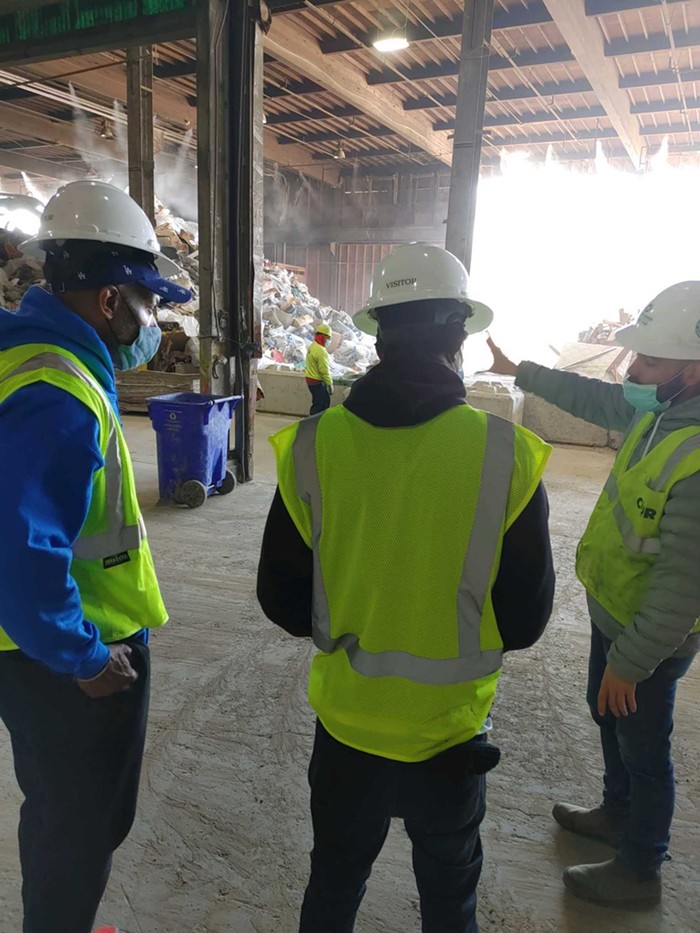
Portland officials have spent the last year working with California Partnership for Safe Communities, a nonprofit that helped Oakland and other cities frame their gun violence response. The group has collected data on the demographic groups that are most impacted by gun violence, and offered analysis on what could be done to slow the trend. The recommendations are similar to the Oakland Ceasefire model, but despite a year of Zoom calls about the data with CPSC’s consultants, there’s been little to no public engagement surrounding these plans.
Last week’s emergency budget package set aside $122,160 to extend the CPSC’s contract with the city.
As Portland rushes to reinstate its gun violence patrol team and signs a deal with the FBI to include federal officers on a similar task force, it’s made clear that seeking input from those who best understand the crisis isn’t a requirement. But the conversation isn’t over. In June, Portland City Council will again vote on the coming year’s budget, and the PPB’s finances will once again take center stage.
PPB Chief Lovell is lobbying to save dozens of PPB positions currently on the chopping block, and will likely ask for additional funding to buoy the newly reinstated gun violence patrol unit. Portlanders have an opportunity to give City Council feedback on the police bureau’s budget this Saturday, at a 10 am virtual hearing.
In the meantime, Jackson will continue answering early morning phone calls from men in crisis. He says he never knows for sure whether or not the callers end up going through with a shooting after they speak. He can only hope his words change someone’s mind.
“For me, it’s getting into the psyche of men who’ve been told their whole life that there are no options for them, that there’s no light at the end of the tunnel,” said Jackson. “I don’t feel hopeful about the generation out there on the streets right now. The only thing I’m able to do, at this point, is help them avoid prison or death.”

